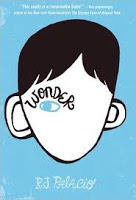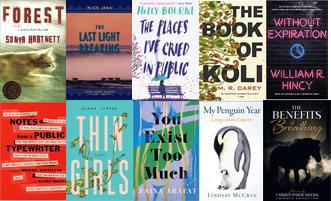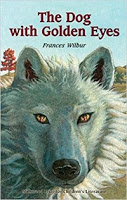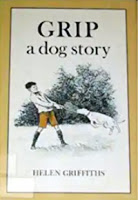by Ernest Thompson Seton
Fair warning: there are a lot of SPOILERS in this post. I tell what happens because I think many readers would like to know ahead of time that A LOT OF ANIMALS DIE in these tales. Akin to Jack London\’s writings, there\’s plenty of fighting and mistreatment. Seton claims that his animal stories are based on fact, however I assume they are embellished with detail. Not quite sure how all the animal protagonists qualify as \’heroes\’ yet they are compelling stories. I actually started reading this one right after The Triumph of Seeds, but then between each story in this volume, I picked up another book as follows:
\”The Slum Cat\”- life of an alley cat, with remarkably pretty markings. At first the story is just about the cat\’s life, how it grows up, daily search for food, avoiding bigger meaner cats, etc. Then the cat starts hanging around what sounds like a disreputable shop that sells pet birds. The seller comes up with an idea to fob off the alley cat as a rare pedigreed import at a local fancy cat show. Everyone is taken in, and the cat gets sold to a wealthy family, who do some remarkable mental gymnastics to excuse every ill-mannered and anti-social behavior the cat exhibits in their nice home. The cat is well-fed and pampered but hates it all and longs to return to its alley. Eventually it escapes and makes its way back home. Story doesn\’t quite end there, though! After this one I read
Maverick Cats.
\”Arnaux\” is about a homing pigeon. The bird lives in a loft that appears to have multiple owners- and the story describes how the pigeons are kept and flown. Different from nowadays (which I only know from reading a general
nonfiction book on pigeons). The birds must have excellent navigational skills, endurance and smarts, to make it home again. There\’s one bit where a pigeon takes a message to get help for a ship stranded at sea, but most of it is about regular homing pigeon races. One bird is less attractive and smaller than the rest, but the fastest racer in the loft. In part of the story this bird gets captured and shut into a different loft on his way home- by a fancier who doesn\’t intend to actually steal him, but to breed him and then let him go again. He ends up staying in the strange loft for
years before escaping and heading straight on home again. But then the pigeon meets a sudden and cruel end. I\’m sure Seton just means to show how life is not always kind and fair, but still, you might not want to read this story to a sensitive child. Following this one I read
A Pigeon and a Boy.
\”Badlands Billy: the Wolf That Won\” is about a large wolf that preys on cattle so hunters are always after him. The first part of the story tells how he grows up as a pup, looses his mother and is raised by another wolf, his foster-siblings die from poisoning so then he gets all the milk and grows larger than most. Looses his foster mother at the hand of man as well but is old enough to fend for himself. Soon gains the attention of men from killing cattle- the second half of the story is mostly from human viewpoint, how they hunt down the wolf with dog packs. In this one the wolf is victor, but still it\’s unsettling to read how all the dogs are killed by the wolf (the author warns you ahead of time this is coming, in case you want to stop reading!) Not one of my favorites. After this one I read
Flight of the White Wolf.
\”The Boy and the Lynx\”- there\’s a boy visiting some friends (a young man and his two sisters) who live in a small cabin in northern Canada. Out in the middle of the forest. Kid has gone there to recuperate his health, and is having a fine time until they all get ill. (The description of the fever and chills they suffered reminded me instantly of a scene in
Little House on the Prairie). Completely debilitated by the illness, they\’re all mostly bedridden and start to run out of food. At the same time there\’s a lynx living nearby, has a den with two kittens. The lynx is near starving because rabbit population has crashed. Lynx starts coming to the cabin to steal chickens, and then gets bolder. The boy has seen the lynx a few times in the forest, but now weak and sick he has a hard time recognizing the fierce animal that comes into the cabin to eat the food off their table at night. There\’s a final confrontation, and even though it escapes alive, the lynx gets the worst of it in the end. The final scene in this story is very grim, and probably also very realistic. I couldn\’t stop picturing it. I don\’t have a book on my shelf specifically about lynx or even a bobcat, so next I read
Wild Cats.
\”Little Warhorse\”- When I first glanced through the table of contents, thought this was about a wild horse. Nope, it\’s a jackrabbit. One larger, faster, smarter than all the rest. The rabbit has his speed and hiding places and quick maneuvers to evade dogs and coyotes that chase it. But then humans hold a rabbit drive. The whole town gathers to beat the shrubbery and drive all the wild rabbits into a kind of corral. Hundreds are simply slaughtered, but those that catch people\’s eye are set aside and taken to use in greyhound coursing. Which usually means the dogs kill the rabbits, while people on the sidelines are betting on the dogs. Our jackrabbit excels here, too- outrunning the dogs time and time again, gaining admiration from the crowd who dub him Warhorse. The rabbit man (whose job is to take care of jackrabbits that haven\’t been used yet) argues that Warhorse has earned his freedom. The dog people all want to pit their greyhounds against him, so they agree on a set number of matches after which if the jackrabbit is still alive, it can be set free. The rabbit gets holes punched in his ears to mark each race won. But then they argue for
more races, because other people are now eager to pit
their dogs against this rabbit too. Rabbit man gets into a fight over it. So in this one the main animal character survives in the end, but a
ton of his fellow rabbits died for sport.
The Adventures of Peter Cottontail was my next read.
\”Snap: the Story of a Bull-Terrier\”- man owns a fierce little bull-terrier dog that is vicious to everyone. It took him a week to earn the dog\’s trust. He\’s the only one who can handle it safely, and the dog is always super eager to fight any other dog it meets. Man visits a cattle ranch on business and goes along on some wolf hunts; the ranchers are no longer allowed to poison wolves so track them down to mitigate livestock losses, but their dogs won\’t actually grapple with the wolf. They have foxhounds to trail the scent, greyhounds to chase, and great danes and wolfhounds to close in the fight- these dogs working together can get coyotes but not the wolf. So the main character brings his bull-terrier along. It is slower than the other dogs (having shorter legs) but once upon the wolf, dives into the fight without hesitation. The men are glad to finally kill a wolf, and admire the bull-terrier\’s bravery, but the dog takes serious injuries. Sorry to say this is another one where the animal dies. I read a juvenile fiction book called
Grip: a Dog Story next and that was a very fit pairing.
\”The Winnipeg Wolf\” is about a wolf that\’s taken from its den when its mother and littermates are all killed for bounty. The young wolf is chained up outside a saloon where people amuse themselves by setting their dogs on him and poking him with sticks. A bratty child flees his irate father into the wolf\’s shelter, and instead of attacking the animal defends him. Soon the boy and the wolf are stout companions, even though the wolf is always tied up. Eventually it gets free, is harrassed by people and chased by dogs, but never caught again. When the kid gets sick and dies from a fever, the lonely wolf hangs around town, never leaving into the wilderness. It continues to hate men and dogs but never will harm children. However the townsmen enjoy pitting their dogs against the wolf, over and over until there\’s a final fight with a whole scrum of dogs against the one wolf. Guess how it ends. After this one I read
The Dog with Yellow Eyes.
\”Legend of the White Reindeer\”- I don\’t quite know what to say about this one. It\’s set in Norway, about a white reindeer which is born in a herd that is annually inspected by men to pick animals out for training to pull sleds. The white reindeer is big and strong (it fought off a wolverine as a yearling, with the help of its mother), so of course attracts attention. It is taken into captivity and trained, but retains its fierceness and will turn on any man that mistreats it. A lot of this story was a jumble to me though- there were so many unfamiliar place names and foreign terms I had trouble following it. At one point there are races, of reindeer and horses respectively, and the white reindeer does so well it is put in a race against the fastest horse. Then there\’s a lot of doings among men it seems there was a misunderstanding and someone was going to turn traitor- the white reindeer was harnessed to take him carrying a message but instead of going where he was supposed to the reindeer ran off into the wilderness up a steep trail he\’d often followed as a young free animal, and they were both lost in a storm, never heard of again. Which was beneficial to the country. I didn\’t get it.
Well, in spite of all the dismal treatment animals get in these stories, and the brutal fights, nevertheless I found them engaging and lively, with wonderful descriptions. Seton just is a darn good storyteller. Except for the last about the reindeer, they all stuck in my head vividly. Really like the illustrations, too. I think my favorite was probably \”Slum Cat.\”
Rating: 3/5 362 pages, 1901












